Alcohol Consumption Modulates Host Defense in Rhesus Macaques by Altering Gene Expression in Circulating Leukocytes
- PMID: 26621857
- PMCID: PMC4685011
- DOI: 10.4049/jimmunol.1501527
Alcohol Consumption Modulates Host Defense in Rhesus Macaques by Altering Gene Expression in Circulating Leukocytes
Abstract
Several lines of evidence indicate that chronic alcohol use disorder leads to increased susceptibility to several viral and bacterial infections, whereas moderate alcohol consumption decreases the incidence of colds and improves immune responses to some pathogens. In line with these observations, we recently showed that heavy ethanol intake (average blood ethanol concentrations > 80 mg/dl) suppressed, whereas moderate alcohol consumption (blood ethanol concentrations < 50 mg/dl) enhanced, T and B cell responses to modified vaccinia Ankara vaccination in a nonhuman primate model of voluntary ethanol consumption. To uncover the molecular basis for impaired immunity with heavy alcohol consumption and enhanced immune response with moderate alcohol consumption, we performed a transcriptome analysis using PBMCs isolated on day 7 post-modified vaccinia Ankara vaccination, the earliest time point at which we detected differences in T cell and Ab responses. Overall, chronic heavy alcohol consumption reduced the expression of immune genes involved in response to infection and wound healing and increased the expression of genes associated with the development of lung inflammatory disease and cancer. In contrast, chronic moderate alcohol consumption upregulated the expression of genes involved in immune response and reduced the expression of genes involved in cancer. To uncover mechanisms underlying the alterations in PBMC transcriptomes, we profiled the expression of microRNAs within the same samples. Chronic heavy ethanol consumption altered the levels of several microRNAs involved in cancer and immunity and known to regulate the expression of mRNAs differentially expressed in our data set.
Copyright © 2015 by The American Association of Immunologists, Inc.
Figures
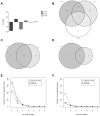
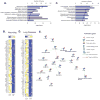
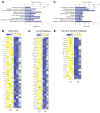
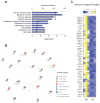

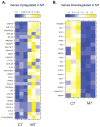
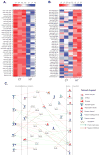
Similar articles
-
Transcriptome Profiling Reveals Disruption of Innate Immunity in Chronic Heavy Ethanol Consuming Female Rhesus Macaques.PLoS One. 2016 Jul 18;11(7):e0159295. doi: 10.1371/journal.pone.0159295. eCollection 2016. PLoS One. 2016. PMID: 27427759 Free PMC article.
-
Moderate alcohol consumption enhances vaccine-induced responses in rhesus macaques.Vaccine. 2013 Dec 17;32(1):54-61. doi: 10.1016/j.vaccine.2013.10.076. Epub 2013 Nov 6. Vaccine. 2013. PMID: 24200973 Free PMC article.
-
Chronic ethanol consumption modulates growth factor release, mucosal cytokine production, and microRNA expression in nonhuman primates.Alcohol Clin Exp Res. 2014 Apr;38(4):980-93. doi: 10.1111/acer.12325. Epub 2013 Dec 13. Alcohol Clin Exp Res. 2014. PMID: 24329418 Free PMC article.
-
Immunity and immunological memory following smallpox vaccination.Immunol Rev. 2006 Jun;211:320-37. doi: 10.1111/j.0105-2896.2006.00392.x. Immunol Rev. 2006. PMID: 16824139 Review.
-
Increased susceptibility of experimental animals to infectious organisms as a consequence of ethanol consumption.Alcohol Alcohol Suppl. 1994;2:425-30. Alcohol Alcohol Suppl. 1994. PMID: 8974364 Review.
Cited by
-
Transcriptome Profiling Reveals Disruption of Innate Immunity in Chronic Heavy Ethanol Consuming Female Rhesus Macaques.PLoS One. 2016 Jul 18;11(7):e0159295. doi: 10.1371/journal.pone.0159295. eCollection 2016. PLoS One. 2016. PMID: 27427759 Free PMC article.
-
Long-lasting effect of obesity on skeletal muscle transcriptome.BMC Genomics. 2017 May 25;18(1):411. doi: 10.1186/s12864-017-3799-y. BMC Genomics. 2017. PMID: 28545403 Free PMC article.
-
Systematic review of risk prediction studies in bone and joint infection: are modifiable prognostic factors useful in predicting recurrence?J Bone Jt Infect. 2021 Jul 8;6(7):257-271. doi: 10.5194/jbji-6-257-2021. eCollection 2021. J Bone Jt Infect. 2021. PMID: 34285868 Free PMC article. Review.
-
Transcriptional and Epigenetic Regulation of Monocyte and Macrophage Dysfunction by Chronic Alcohol Consumption.Front Immunol. 2022 Jun 29;13:911951. doi: 10.3389/fimmu.2022.911951. eCollection 2022. Front Immunol. 2022. PMID: 35844518 Free PMC article. Review.
-
CD103+ CD8 T Cells in the Toxoplasma-Infected Brain Exhibit a Tissue-Resident Memory Transcriptional Profile.Front Immunol. 2017 Mar 29;8:335. doi: 10.3389/fimmu.2017.00335. eCollection 2017. Front Immunol. 2017. PMID: 28424687 Free PMC article.
References
Publication types
MeSH terms
Substances
Associated data
Grants and funding
LinkOut - more resources
Full Text Sources
Other Literature Sources
Medical

